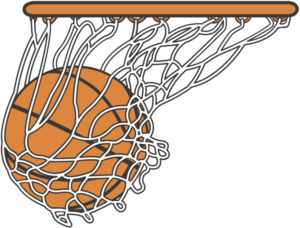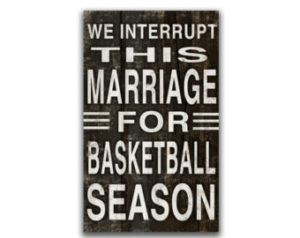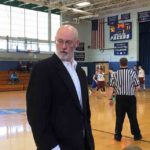 There are a number of ways that meditation can be used by athletes to Train Your Brain to perform better both on the court or in the classroom. Some examples of the various types of meditations presented by Coach Wheeler include “No Regrets” meditation, Visualization and Mindfulness meditations. These and others will be discussed in the article below.
There are a number of ways that meditation can be used by athletes to Train Your Brain to perform better both on the court or in the classroom. Some examples of the various types of meditations presented by Coach Wheeler include “No Regrets” meditation, Visualization and Mindfulness meditations. These and others will be discussed in the article below.
What are some places where can I use meditation?
There are also a number of situations where you can use meditation to put your mind in the proper state to perform at your best. Some of these are Pre-Game, Post-Game, Pre/Post Practice or in anticipation of a high stress event such as a playoff game or test in school.
What is meditation?
For the sake of this article, we will be talking about guided meditations where you listen to a voice that gives you directions to lead you through the meditation process. There is a whole field of meditation which is “unguided” and sometimes uses a “mantra” or a phrase repeated over and over to train your brain. Other types of unguided meditation have you focus on your breath and that technique has been incorporated into the guided meditations produced by Coach Wheeler. Speaking of that…
QUICK COMMERCIAL break…
Coach Wheeler produces his own basketball camp through InviteOnlyBasketball.com that features Mindset training. He also speaks at other camps on the topics of “Mind Control for Athletes” and “Train Your Brain for High Performance”. For more information and to check Coach Wheeler’s availability for speaking at your event, send him an email via the Contact Us page (click here).
Now, back to your regularly scheduled programming…
No Regrets
This meditation is similar to the experience that Scrooge goes through in the classic story, “A Christmas Carol”. It is a simple story… Scrooge is exposed to a vision of the past, present and [a potential] future. The key is to figure out what your current present (and past) is leading to (one potential future) and then figure out what changes you need to make (NOW) so that your future will be better.
In essence, this meditation takes you through a visualization of some future event that is causing you stress and which you might end up with regrets if things do not “go your way”. Once you have seen the future, you come back to the present and imagine the changes you need to make so that your future improves. The final part of this meditation is a visualization of the new (better) version of the future event based on the changes you will make in the present.
Typically this results in an empowered feeling that you have more control over your future and are motivated to take the actions needed to make your desired future happen.
Want to try it? Contact Coach Wheeler for information on how you can get a copy of his Guided Results Meditation for “No Regrets” audio file. He often does this meditation at his basketball camps or speaking engagements.
Performance Enhancement / Visualization
Using a guided meditation to help you visualize success in a particular activity has been proven to be almost as effective as actually practicing the activity… without the physical stress of the activity.
Visualization is a great way to”get more reps in” without putting added stress on your body. In fact, meditation, when done right, can be highly relaxing and aid in your body’s recuperation from hard training sessions. It is a great complement to the rest of your training on the court or in the weight room.
Visualization can be used to deal with a future pressure-filled situation like a game-winning shot or an exam in school. By visualizing the event, you can desensitize yourself to the potential stress. You also learn to relax so you can perform at your best.
Want to try it? Contact Coach Wheeler for information on how you can get a copy of his Guided Results Meditation for “Visualization for Athletes” audio file. He often does a Visualization meditation at his basketball camps or speaking engagements.
Relax/Focus [Mindfulness]
Mindfulness meditation is what most people are talking about when they talk about “meditation”. This type of meditating trains your brain to be mindful of the thoughts that pop up. Eventually, you will exercise control over how you interact with those thoughts.
The process of meditating, in almost all forms, is a form of relaxation for the body and mind. It is also a way to build the skill of control over the workings of your mind.
If you think about it… whose mind is the most important to control? If you control yourself, you are in a position to control the outcome of events in your life. This done through recognition of opportunities and application of actions toward your highest priority goals. Few people (or athletes) consider how much better they would do if they controlled their thoughts… and guided meditation is a great way to start.
Want to try it? Contact Coach Wheeler for information on how you can get a copy of his Guided Results Meditation for Mindfulness audio file. He often does this meditation at his basketball camps or speaking engagements.
Motivation / Focus
This meditation is a “thinking exercise” to help you uncover your motivation and focus on actions to achieve your goal. This is especially important when you know what you probably “should” do… but you don’t really feel like doing it. As you reconnect with your motivation in a meditative state, you are re-energized and ready to launch into action.
Want to try it? Contact Coach Wheeler for information on how you can get a copy of his Guided Results Meditation for Motivation / Focus audio file. He often does this meditation at his basketball camps or speaking engagements.
Topics related to Meditation for Student/Athletes…
Focus is critically important to your success in any endeavor. It is obvious that distractions are achievement killers.
As your brain is trained through meditation to be more mindful of things going on in your life, there is a great tool that you can use to help you focus on what is most important. It is called “W.I.N.” or the practice of asking yourself “What’s Important Now?” on a regular basis throughout your day. Click here for an article about how to use this tool to help you W.I.N.
Another great article on meditation for basketball players can be found here… click here. An infographic from that article is worth checking out.
Bottom Line …
Meditation is an incredible tool for athletes who want to get the most out of all their training efforts. You are working hard to improve your body and sport-specific skills. Why wouldn’t you Train Your Brain for high performance as well? This article presented different types of meditation to improve how your mind works in games, the classroom and life.
Coach Wheeler is not some sort of guru on a mountain top… he is a coach who is focused on results for the players he works with on a regular basis. Want to learn more? Contact Coach Wheeler to set up an appointment. click here.
When you control your own mind, you have an advantage over the competition. You are able to tackle bigger challenges with less stress. Are you ready to try meditation for yourself?

 What does it mean for a player to “take their game to the next level”? It sounds like a good thing but without understanding the meaning it is hard to get there, right?
What does it mean for a player to “take their game to the next level”? It sounds like a good thing but without understanding the meaning it is hard to get there, right? I coached this player as part of an AAU team when he was a freshman and he was a pretty good shooter. I won’t “name names” since I don’t want to embarrass him. Plus the advice could apply to a number of players.
I coached this player as part of an AAU team when he was a freshman and he was a pretty good shooter. I won’t “name names” since I don’t want to embarrass him. Plus the advice could apply to a number of players.
 Pattern Interrupts are a valuable tool that anyone can use to train your brain. We are all creatures of habit based on years of history. We have patterns that help us and others that don’t. You now have a tool to start changing those habits or patterns into something that better supports your goals.
Pattern Interrupts are a valuable tool that anyone can use to train your brain. We are all creatures of habit based on years of history. We have patterns that help us and others that don’t. You now have a tool to start changing those habits or patterns into something that better supports your goals. OODA stands for Observe / Orientate / Decision / Action and is a problem solving framework developed by a fighter pilot named
OODA stands for Observe / Orientate / Decision / Action and is a problem solving framework developed by a fighter pilot named 
 As I interviewed for various high school varsity coaching positions, I could see that some of the people on the selection committees seemed to be wondering “Why does he think he can take our school’s basketball program, which may have had only a handful of wins last season and establish a winning tradition?”
As I interviewed for various high school varsity coaching positions, I could see that some of the people on the selection committees seemed to be wondering “Why does he think he can take our school’s basketball program, which may have had only a handful of wins last season and establish a winning tradition?”
 There are a number of ways that meditation can be used by athletes to Train Your Brain to perform better both on the court or in the classroom. Some examples of the various types of meditations presented by Coach Wheeler include “No Regrets” meditation, Visualization and Mindfulness meditations. These and others will be discussed in the article below.
There are a number of ways that meditation can be used by athletes to Train Your Brain to perform better both on the court or in the classroom. Some examples of the various types of meditations presented by Coach Wheeler include “No Regrets” meditation, Visualization and Mindfulness meditations. These and others will be discussed in the article below.